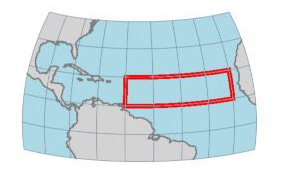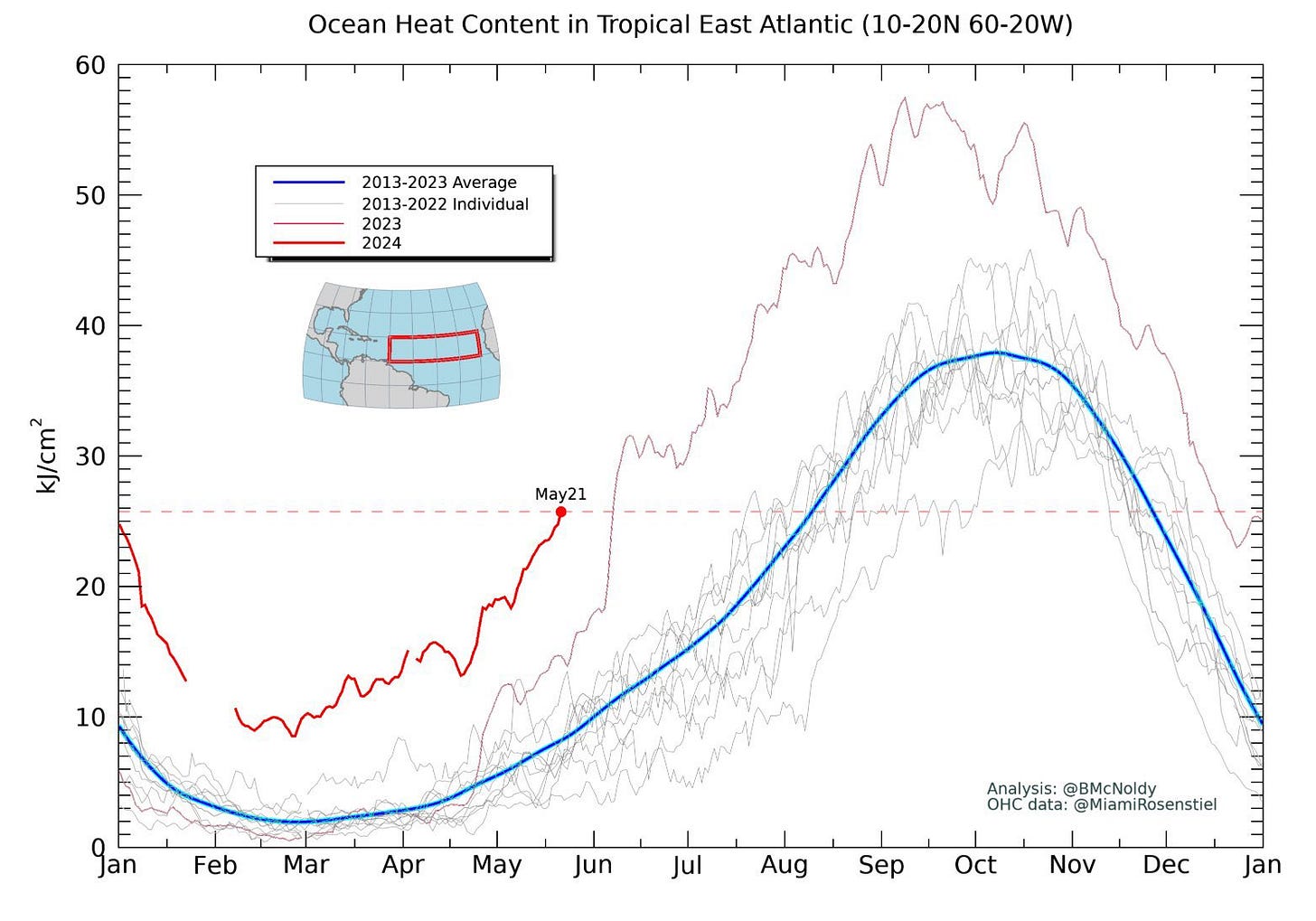
In 2005 I wrote an article entitled “The Dawn of the Hypercane?” following the devastating impact of Hurricane Katrina. The article was based on a study in Science that reported the number of Category 4 and 5 hurricanes worldwide had nearly doubled over the past 35 years. Previous to that these powerful storms were very rare.
The explanation for the rise in these superstorms was increasing water temperatures in the oceans due to the burning of fossil fuels (carbon emissions). A very hot Gulf of Mexico was why Hurricane Katrina went from a Cat 1 storm to a Cat 5 superstorm practically overnight, scientists told me. This is now known as the “rapid intensification” of a hurricane and has happened several times since 2005.
So about hypercanes. From the article:
Hypercanes is a speculative attempt to explain mass species extinctions 245 million years ago. Computer models showed that continent-sized super-storms with winds averaging 600 kilometers per hour could be produced if oceans warmed to an incredible 45 to 50 degrees C.
Luckily our oceans are never going to get that hot. (Ok, maybe an eruption of a gigantic underwater volcano or two might do it.) That said, Cat 5 wind speeds of 250 kilometers per hour (km/h) are bad enough. Back in 2005 hurricane experts told me they foresaw even stronger storms—hypercanes—in our future.
We’re getting there.
Need-to-Know: We’ve already had several Category 6-equivalent hurricanes
Five storms in the past decade had off-the-chart wind speeds exceeding 309 km/h, according to a new study A storm with 309 km/h winds can do four times as much damage as a Category 5 storm with 250 km/h winds.
These should be considered Cat 6 storms. However, the Saffir-Simpson hurricane scale only goes up to Cat 5.
It could easily get worse if global temperatures rise to 2 degrees C. Then we might see Cat 7 storms with winds topping 350 km/h. The number of Cat 6 storms would double in the Gulf of Mexico and increase by 50% around the Philippines.
Here’s what you need-to-know right now.
Ocean temperatures in the tropical Atlantic are off the charts. The area in the red box in the graphic below is where hurricanes are born and grow.
Here’s the latest ocean heat content for the top 200 meters.
The red line is this year’s temps. The broken line shows the temperature on May 21 is about the same as the recent average mid-August temps (blue line). If you look at where the blue line is for May there’s an enormous jump in heat content in the top layer of water. (It is measured in kilojoules per square centimeter or kj/cm2.)
Need-to-Know: Experts say prepare for a hyperactive hurricane season this summer
Hot water fuels hurricanes and the graph above shows there are record amounts of hot water to power plenty of hurricanes and perhaps a Cat 6 storm this summer.
Hurricane forecasters say this will be a “hyperactive hurricane season”. They anticipate 24 to 25 named storms including six major hurricanes (Category 3 or higher).
Need-to-Know: Where are major hurricanes likely to landfall this summer?
The Caribbean has a 66% chance of at least one major hurricane.
The U.S. Gulf Coast has a 40 to 50% chance.
Florida has a 34% chance.
Last week, Florida Governor Ron DeSantis signed a law forcing state officials to ignore climate change and stop preparing for climate impacts. The law also stops renewable energy and energy conservation programs.
Florida insurance was hit hard by Hurricane Ian in September 2022. Total losses topped $115 billion, much of which was uninsured because property insurance is expensive in Florida—for good reason.
Floridians pay four to five times more for property insurance than the average U.S. homeowner. Premiums in Florida now range from $10,000 to 20,000 a year for a modest home. That’s if you can get insurance at all. Most big insurance companies have abandoned the state.
But Gov. DeSantis thinks he can deny the reality of climate change with a stroke of his pen. Good luck with that. And heaven help the residents of Florida.
Until next time. Be well.
Stephen






DeSantis and Premier Smith in Alberta Canada. Twin mindswhich is unfortunate for the residents
Sigh. Humans are ridiculous.